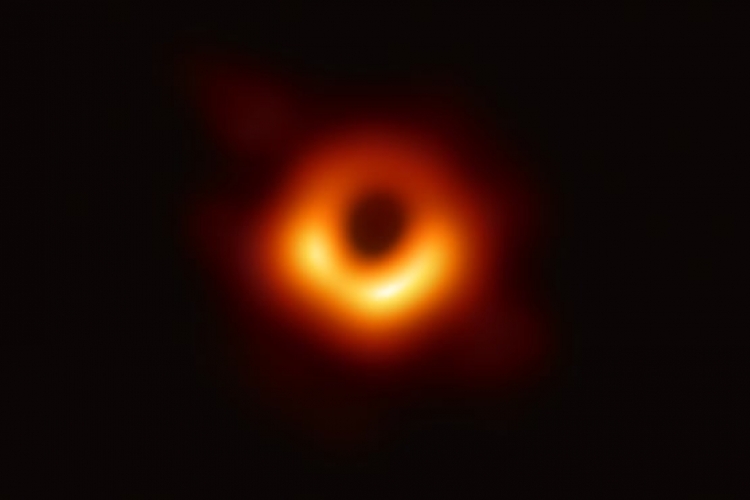Super-massive Black-holes and what all the fuss is about ?
'Powehi', the first black hole captured using eight radio telescopes
What is a Black hole?
A black hole is a region of a space-time exhibiting such strong gravitational effects that nothing—not even particles and electromagnetic radiation such as light can escape from inside it.
Speaking of space-time, Until the turn of the 20th century, the assumption had been that the three-dimensional geometry of the universe (its spatial expression in terms of coordinates, distances, and directions). However, in 1905, Albert Einstein in his special relativity came up with the fourth dimension of Space-time by combining the previously known 3 dimensions. Picture that fourth dimension of space-time as a fabric of cloth on which the universe is lying.
To explain in simpler words, Blackholes are dead stars which run out of its fuel to sustain the nuclear reaction that’s happening in its core. Imagine our sun, when it runs out of hydrogen and helium to sustain the fusion, it collapses in its own weight. All the gas and matter in it will collapse to its core. When this collapse reaches a particular radius called Schwarzschild radius then such a huge mass will tear and rip the fabric of space-time apart and we call it as Blackhole
Schwarzschild radius?
It is the radius to which mass becomes so huge to form a rip in space-time. Every known body could become a black hole if it reaches this radius. Imagine the size and mass of our earth, if compressed to a size of a lemon, then earth could become a black hole.
Why space-time tears?
For this, you will have to understand, Gravity. Gravity is the bending of space-time because of mass. Picture a stretched out cloth fabric and a ball placed upon it will bend the cloth, similarly mass objects like a star, planets bend space-time fabric which we call gravity. When the dead star collapses into Schwarzschild radius, the mass becomes so huge that the space-time instead of bending, get ripped. Thus creating a heavier gravitational pull that even light cannot escape. And we call this black hole.
The image we captured is of a supermassive black hole present in the Messier 87-a galaxy 55-million light-years from Earth. It is a supermassive black hole, 6.5-billion times more massive than our sun and measures 40-billion km across (three million times the size of the Earth). This supermassive black hole weighs 1.989 × 10^30 x 6.5billion kg.
Significance?
A. Einstein was right again! And so was Dr.Stephen Hawking!
Albert Einstein first predicted black holes as part of his theory of relativity in 1915 referred to as "dark stars" or "frozen stars. While we already know that black holes exist and supermassive black holes are present at the centre of every galaxy, this is the first visual proof we got and the picture clearly depicts what Einstein predicted 100 years back. Here, Einstein’s theory predicted the observations from M87 with unerring accuracy and is seemingly the correct description of the nature of space, time, and gravity.
How the researchers captured the first image of a black hole?
The picture was of by combining data from two supermassive blackholes one from the centre of our own, milky way galaxy and other the Messier 87 galaxy’s black hole.
The theory of general relativity predicts that a sufficiently compact mass can deform spacetime to form a black hole. The boundary of the region from which no escape is possible is called the event horizon. In many ways, a black hole acts as an ideal black body, as it reflects no light. How do you take a picture of something which not emit or reflect light? In fact, any light sent to take a picture will be pulled in and never gets back. Moreover, quantum field theory in curved spacetime predicts that event horizons emit Hawking radiation, with the same spectrum as a black body, making it essentially impossible to observe.
To photograph something so impossibly far away, the team needed a telescope as big as the Earth itself. In the absence of such a machine, the Event Horizon Telescope team connected together radio telescopes from around the planet and combined their data. The 5,000 terabytes of data collected were so large that it had to be stored on hundreds of hard drives and physically delivered(because data was too large for the internet to handle) to a supercomputer, which corrected the time differences in the data and produced the image above.


 "UPSC-2026-PRELIMS COMBINED MAINS FOUNDATION PROGRAMME" STARTS WITH ORIENTATION ON FEB-10
"UPSC-2026-PRELIMS COMBINED MAINS FOUNDATION PROGRAMME" STARTS WITH ORIENTATION ON FEB-10